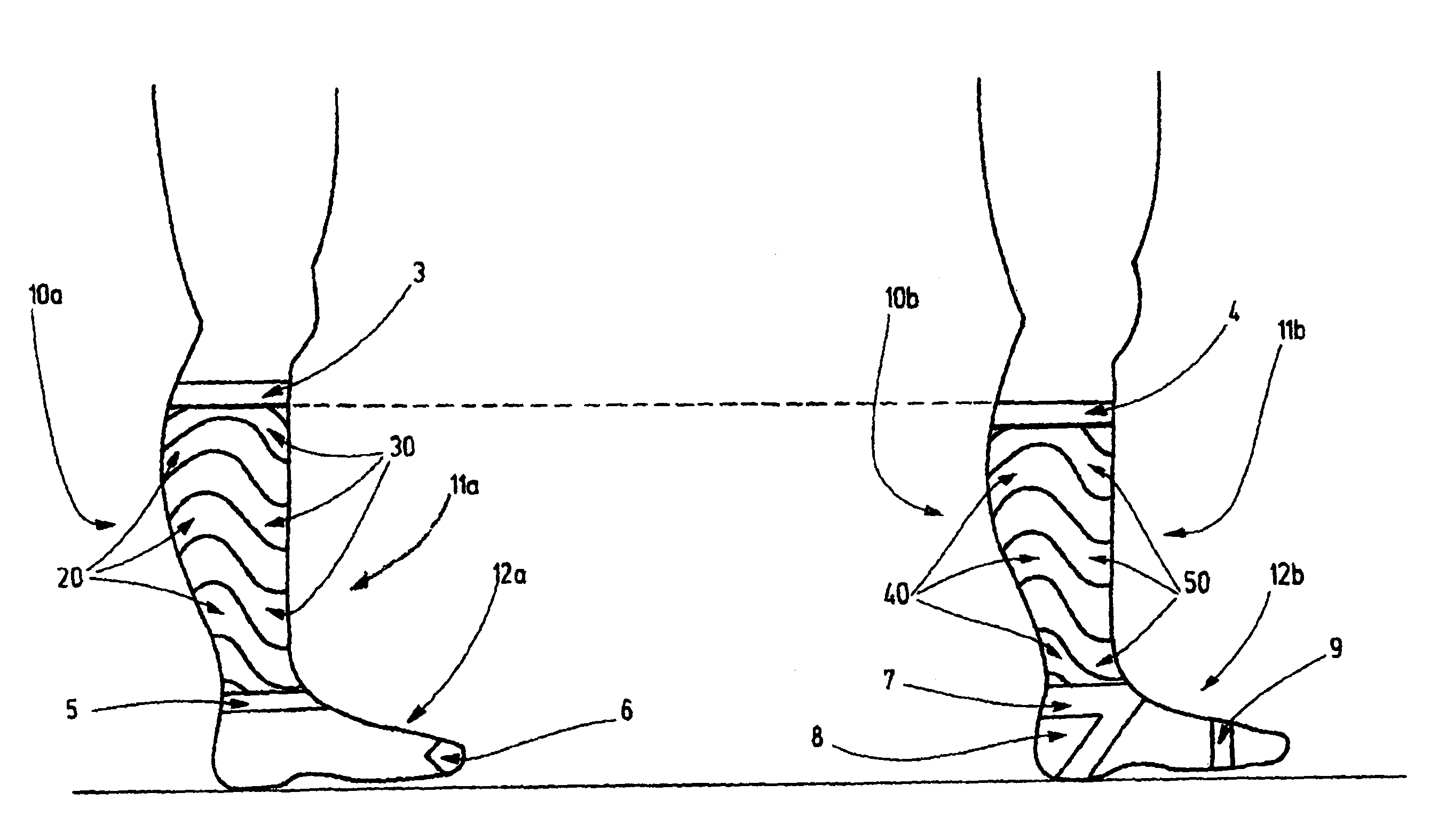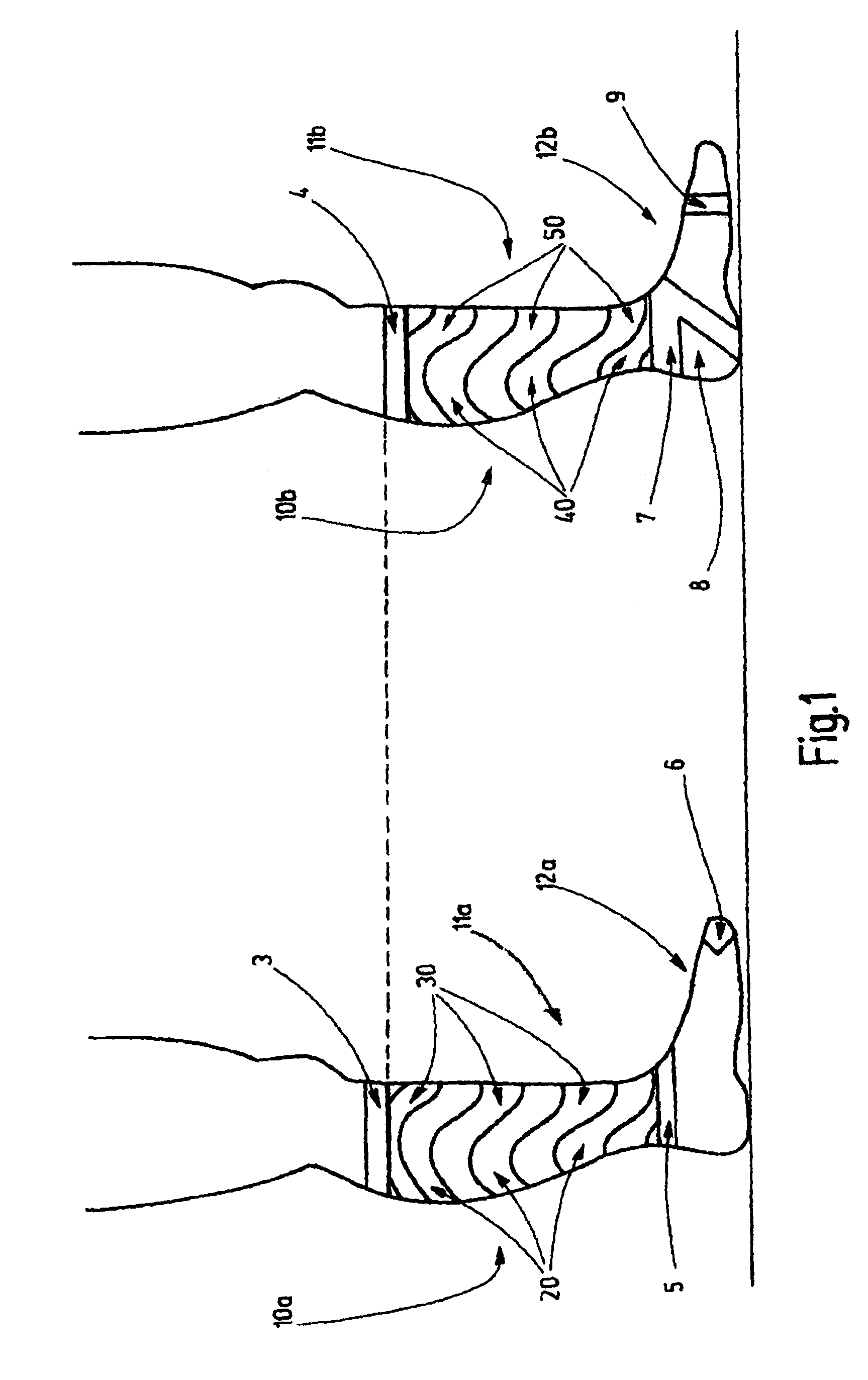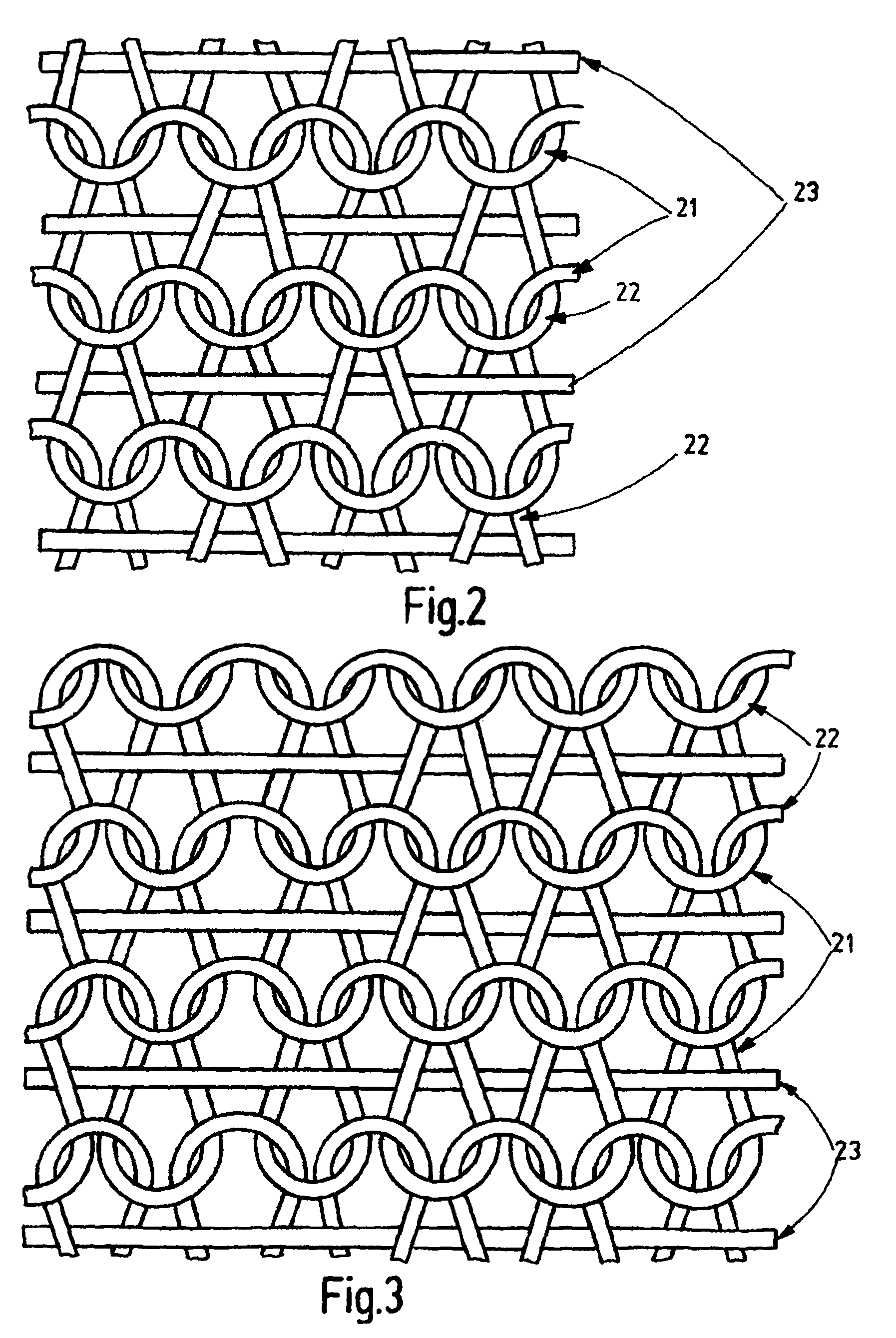[0023]In a preferred embodiment, the pressure of the understocking at measuring point B1 amounts to between 93% and 100%, in particular 95% through 100% and in particular 98% through 100% of the pressure at measuring point B. A pressure progression that is as continuous as possible improves the
wound healing and the fixation of the
wound dressing under the understocking. Furthermore, one embodiment of the invention envisions that the overstocking has a continuously degressive or gradually degressive pressure progression starting from measuring point B and progressing towards the hip of the human leg, i.e. in proximal direction. In particular, the overstocking may be a compression stocking with a pressure progression in accordance with the norm RAL-GZ 387.
[0026]In this context, the invention envisions in particular that the understocking is responsible for providing the desired resting and working pressures, while the overstocking also contributes to this. Therefore, in a particularly favorable embodiment, the understocking is worn day and night to fix the
wound dressing firmly on the wound to be treated and prevent too frequent removal of the
wound dressing from the wound, which affects the
wound healing process. At the same time, however, this ensures that at the time of night's rest, during which the legs are normally put up, the compression effect is only weak, so that numbness
sensation and strangulation in the area of the legs are avoided. In the course of the day, during which the wearer of the compression stocking moves around, the overstocking, which provides a stronger compression effect, can then be pulled over the understocking in addition without interfering with the
wound healing process, so that during the day, in addition to the existing resting and working pressures exerted by the understocking, a similar, stronger resting and
working pressure is achieved with the help of the overstocking, so that the muscular activity results in additional
compression therapy and the
underlying disease is positively influenced. The provision of two stockings placed over each other enables a lower compression effect for each stocking, which facilitates the process of putting the stockings on.
[0034]The foot section of the understocking may provide an integrally knit
toe section as well as an integrally formed
heel, with the
heel having in particular no stitched seam but being developed only through
thermal deformation of the fabric. The foot section has preferably no compression, with the very smooth fabric ensuring easy application of the overstocking in the strongly bent foot area.
[0036]In particular, the understocking and / or the overstocking may also have a pressure relief area bordering the leg section. If the stocking or the stockings have been applied correctly, this pressure relief area is located in the
ankle area and between the leg section and the foot section of the stocking accordingly. This pressure relief area has the
advantage that the transition from very
high pressure to low through very low pressure is not abrupt in the area bordering the
ankle area, in particular at point B, which shows the highest pressure, and that no
constriction thereby occurs within the area covered by the stocking. In a particularly preferred embodiment, understocking and / or overstocking has a reciprocated
heel, wherein a pressure relief area is located in the border area of the reciprocated heel. In particular, this pressure relief area may be upsilon-shaped (Y-shaped) in a
lateral view of the stocking. In that embodiment, the reciprocated heel is completely encircled by the pressure relief area. Another embodiment envisions, however, that the pressure relief area is located radially at the end of the leg section in the understocking and / or overstocking.
[0037]Furthermore, another embodiment may be provided with a pattern, in particular a wave pattern, in the leg section of the understocking and / or the overstocking, with the
waves running in circumferential direction. This wave pattern may in particular be knit into the material, so as to form raised and less raised zones. This pattern can help achieve better fixation of both stockings over each other, as it increases the roughness and thus the adhesion of both leg sections. In a particularly preferred embodiment, the patterns of understocking and overstocking are congruent when the stockings are worn over each other.
[0042]The
algae particles may come from
brown algae, namely preferably
Ascophyllum nodosum, or
red algae, namely preferably Lithothamnium calcareum. The fibers can be produced using the
Lyocell method. Using such fibers has the
advantage that agents such as
vitamin E (tocopherols), carotenoids and minerals in their ionic form, such as
sodium ions,
calcium ions or
magnesium ions, are released in the presence of water and / or
perspiration. The agents are incorporated in the
algae containing fibers for longer periods and do not immediately wash out even during laundering operations. Seacell® or other
algae containing fibers consist of at least 90% w / w
cellulose, 0.1-10% w / w algae and 0-10% other additives. When released, the agents contained in the algae have a positive effect on the wearer's
skin. Provided that both the understocking and the overstocking contain algae material, this prevents a gradient of agents between the stockings and thus supports the release of the agents onto the wearer's
skin.
 Login to View More
Login to View More  Login to View More
Login to View More 


